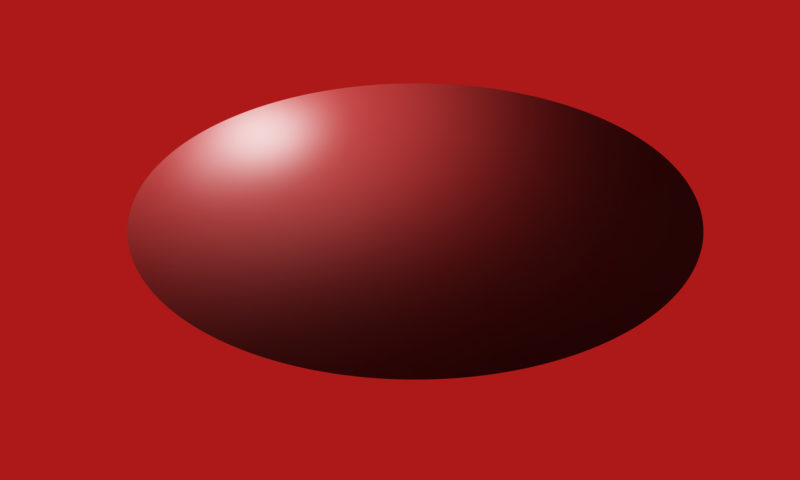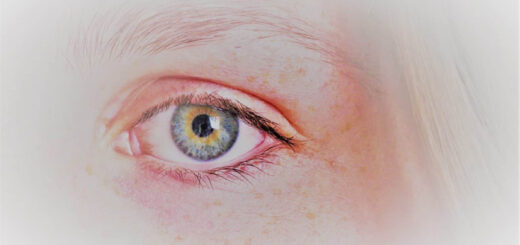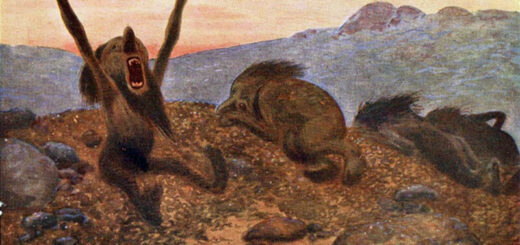Thought forms – Thoughts condensed on purpose or by accident
The meaning of “thought form” is on a turning point as what used to be called thought forms, meaning artificial astral units with or without an entity state and created on purpose or by accident, are now called servitors, memes, tulpas, constructs. Thought form as a term becomes more and more reserved for a temporary thought form technique, used as the follow up of the classic chaos magical act (and working much better).

When you create a servitor (formerly known as a thought form) chose some original but simple shape for the creature, when you just start working with them. You can create a blue giraffe smoking a cigar and wearing a Che Guevara-T-shirt of course, but it will cost you more imagination energy…
John Kreiter, in my opinion, is the best teacher and most renewing occultist in this field. You should surely visit his website, read his outstanding informative books, watch his videos on the matter and simply TRY IT YOURSELF!
Yes this reads like a commercial, but it isn’t. I write it because I share myself as a teacher in Western magical systems among that new generation of authors who is aiming for the no nonsense-essence of magic, which originally was just a collection of methods combined with psychospheric and metaphysical knowledge, which is not a secret but consist of a kind of universal logic and primordial language and vocabulary of nature.
Ordinary haven’t got a clue how their lives are dominated by artificial thought forms on a mega scale! Today every sane person knows money is created by banks out of nothing, just by typing it on a computer screen, yet millions ar thus stupid they do not understand the consequences of this fact: That poverty in the word is as artificially orchestrated as our financial system based on talking hard working people into guild complexes by means of which their houses and lives can be confiscated if they do not pay their morgages on time. A similiar joke is the tax system. Why in the name of God pay taxes, with what right collect taxes when tax money can be created as easily out of nothing as bankers money??!! Throwing bombs cowardly out of planes flying miles high, on villagers or towns with civilians for no other reason than the planned hysteria of psychopath politicians and the multinationals behind them is totally insane and inhuman. Yet of the three “modermisms” mentioned above most people take them for granted and even for “our reality”.
The only reason they do so is NOT indoctrination, but because they are trapped in giant thought forms, fed and empowered by sick mass media companies and their presstitudes. The power of thought forms is thus strong, they can completely dehumanise us, create an artificial reality we by error take for real and normal and keep u trapped in it for most of our lives.
When people would start to realise the true impact of hundreds of thought forms (meaning memes) on their daily lives and the future of their children and the Earth, their own reality would get such a shock, many people would simply collapse, realising their whole way of thinking and feeling is based on lies, impregnated from childhood on, just to use their life energy to feed something very dark and negative – the Enemy of Life, Happiness and Freedom. (Not the Gnostic Archon, as matter is NOT what traps people, but the force who locks people up in obsessions, among which the patters of daily decent political correct life are the most dangerous and suffocating.). Our modern over-financialized life is 100% based on mass-psychosis enforcement. Not on reason or human values.
That was the modern part on thought forms and their power. In the text below I present some of the more classic notes about the thought form phenomena, as the creative magician or witch will certainly find some useful stuff there. First we take a look at thought forms via William Walker Atkinson (December 5, 1862 – November 22, 1932) followed by information about the way Annie Besant and C.W. Leadbeater saw the concept of thought forms. They were also the ones who first introduced the term thought form into occultism in their 1901 book with the title Thought forms. By the way, William Walker Atkinson clearly writes about thought forms in line with the Theosophical conception. Finally I added some other perspectives on thought forms, taken from Wikipedia.
Benjamin Adamah, Amsterdam September, 9-2019
William Walker Atkinson on thought forms
That interesting phase of occult phenomena, known as “thought forms,” is so closely related to the general subject of the human aura that a mention of one must naturally lead to the thought of the other. Thought-forms are built up of the very material composing the aura, and manifest all of the general characteristics thereof, even to the auric colors. An understanding of the facts of the human aura is necessary for a correct understanding of the nature of the thought-forms composed of the same substance.

The witches’ familiars could be spirits given or lend to the witch by a daemon, could simply be pets like a cat or toad or what is now called a servitor (artificial created serving spirit). Sometimes we find very weird or funny names given to them.
A “thought form” is a peculiar manifestation of mental activity on the astral plane. It is more than a powerful disturbance in the body of the human aura, although this is the place of its embodiment or birth in the objective world. It is formed in the following manner: A person manifests a strong desire, feeling or idea, which is naturally filled with the dynamic force of his will. This sets up a series of strong vibrations in the body of the aura, which gradually resolve themselves into a strong whirling centre of thought-force involved in a mass of strongly cohesive auric substance, and strongly charged with the power of the prana of the person.
In some cases these thought forms survive in the auric body for some little time, and then gradually fade away. In other cases they survive and maintain an almost independent existence for some time, and exert a strong influence upon other persons coming in the presence of the person.
Again, these thought forms may be so strongly charged with prana, and so imbued with the mental force of the person, that they will actually be thrown off and away from the aura itself, and travel in space until they exhaust their initial energy—in the meantime exerting an influence upon the psychic aura of other persons.
A thought-form is more than merely a strongly manifested thought—it really is such a thought, but surrounded by a body of ethereal substance, charged with prana, and even carrying with it the vibration of the life energy of its creator. It is a child of the mind of its creator, and acquires a portion of his life-essence, so to speak, which abides with it for a longer or shorter time after its birth. In extreme instances it becomes practically a semi-living elemental force, of necessarily comparatively short life.
To those who find it difficult to understand how a thought-form can persist after separation from the presence of the thinker, I would say that the phenomena is similar to that of light traveling in space, long after the star which originated it has been destroyed. Or, again, it is like the vibrations of heat remaining in a room after the lamp or stove causing it has been removed, or the fire in the grate having died out. Or like the sound waves of the drum-beat persisting after the beat itself has ceased. It is all a matter of the persistence of vibrations.
 Thought forms differ greatly one from the other in the matter of shape and general appearance. The most common and simple form is that of an undulating wave, or series of tiny waves, resembling the circles caused by the dropping of a pebble into a still pond. Another form is that of a tiny rotating bit of cloud-like substance, sometimes whirling towards a central point, like a whirlpool; and sometimes swirling away from the central point like the familiar “pin-wheel” fireworks toy. Another form is akin the ring of smoke projected from the coughing locomotive, or the rounded lips of the cigar smoker, the movement in this kind being a form of spiral rotation. Other thought forms have the appearance of swiftly rotating balls of cloudy substance, often glowing with a faint phosphorescence.
Thought forms differ greatly one from the other in the matter of shape and general appearance. The most common and simple form is that of an undulating wave, or series of tiny waves, resembling the circles caused by the dropping of a pebble into a still pond. Another form is that of a tiny rotating bit of cloud-like substance, sometimes whirling towards a central point, like a whirlpool; and sometimes swirling away from the central point like the familiar “pin-wheel” fireworks toy. Another form is akin the ring of smoke projected from the coughing locomotive, or the rounded lips of the cigar smoker, the movement in this kind being a form of spiral rotation. Other thought forms have the appearance of swiftly rotating balls of cloudy substance, often glowing with a faint phosphorescence.
Sometimes the thought form will appear as a great slender jet, like steam ejected from the spout of a tea-kettle, which is sometimes broken up into a series of short, puffed-out jets, each following the jet preceding it, and traveling in a straight line. Sometimes the thought form shoots forth like a streak of dim light, almost resembling a beam of light flashed from a mirror. Occasionally, it will twist its way along like a long, slender corkscrew, or auger, boring into space.
In cases of thought-forms sent forth by explosive emotion, the thought form will actually take the form of a bomb, which literally explodes when it reaches the presence of the person toward whom it is aimed. Every person has experienced this feeling of a thought bomb having been exploded in his near vicinity, having been directed by a vigorous personality. This form is frequently found in the thought forms sent out by a strong, earnest, vigorous orator.
There are strong thought forms which seem to strive to push back the other person, so correctly do they represent the idea and feeling back of their manifestation. Others seem to strive to wind around the other person, and to try to literally drag him toward the first person, this form often accompanying strong appeal, persuasion, coaxing, etc., when accompanied by strong desire. A particularly vigorous form of this kind of thought form takes on the appearance of a nebulous octopus, with long, winding, clinging tentacles, striving to wrap around the other person, and to draw him toward the center.
The force of the feeling behind the manifestation of the thought form will often travel a long distance from the sender—in fact, in cases of great power of concentration, space seems to be no barrier to its passage. In striking instances of thought transference, etc., it will be found that thought forms play an important part.

Clairvoyant image of thought form described as in the book Thought forms as “Vague pure affection”
The variety of shapes of thought forms is almost endless. Each combination of thought and feeling creates its own form, and each individual seems to have his own peculiarities in this respect. The forms I have above described, however, will serve as typical cases to llustrate the more common classes of appearances. The list, however, might be indefinitely expanded from the experience of any experienced occultist, and is not intended to be full by any means. All varieties of geometrical forms are found among the thought forms, some of them being of remarkable beauty.
In considering the subject of projected thought forms, moreover, it must be remembered that they partake of, and manifest, the same colors as does the aura itself, for they are composed of the same material and are charged with the same energy. But, note this difference, that whereas the aura is energized from the constant battery of the organism of the individual, the thought form, on the contrary, has at its service only the energy with which it was charged when it was thrown off—being a storage battery, as it were, which in time expends all of its power and then is powerless.

Clairvoyant image of thought form described as in the book Thought forms as “Selfish greed”
Every thought form bears the same color that it would possess if it had been retained in the body of the aura itself. But, as a rule, the colors are plainer, and less blended with others—this because each thought form is the representation of a single definite feeling or thought, or group of same, instead of being a body of[53] widely differing mental vibrations. Thus the thought form of anger will show its black and red, with its characteristic flashes. The thought form of passion will show forth its appropriate auric colors and general characteristics. The thought form of high ideal love will show its beautiful form and harmonious tinting, like a wonderful celestial flower from the garden of some far off Paradise.

Clairvoyant image of thought form described as in the book Thought forms as “The intention to know”.
Many thought forms never leave the outer limits of the aura, while others are projected to great distances. Some sputter out as they travel, and are disintegrated, while others continue to glow like a piece of heated iron, for many hours. Others persist for a long time, with a faint phosphorescent glow. A careful study of what has been said regarding the characteristics of the various feelings and emotions, as manifested in the auric body, will give the student a very fair general idea of what may be the appearance of any particular variety of thought form, for a general principle runs through the entire series of auric phenomena. An understanding of the fundamental principles will lead to an understanding of any of the particular varieties of the manifestation thereof.
Finally, remember this: A thought form is practically a bit of the detached aura of a person, charged with a degree of his prana, and energized with a degree of his life energy. So, in a limited sense, it really is a projected portion of his personality.
Annie Besant and Charles W. Leadbeater on thought forms
Annie Besant and C. W. Leadbeater wrote that “each definite thought produces a double effect — a radiating vibration and a floating form.” The radiating vibration “conveys the character of the thought, but not its subject.” For example, serenity or devotion radiating from one person can stimulate similar vibrations in a nearby person who is receptive. The floating form is a strong and definite thought that has attracted energies from the mental and astral plans, and has become, for a time, a kind of independent living being.

Clairvoyant image of two thought forms described as in the book Thought forms as “sustained anger & murderous rage
Thought-forms directed towards individuals produce definitely marked effects… A thought of love and of desire to protect, directed strongly towards some beloved object, creates a form which goes to the person thought of, and remains in his aura as a shielding and protecting agent; it will seek all opportunities to serve, and all opportunities to defend, not by a conscious and deliberate action, but by a blind following out of the impulse impressed upon it, and it will strengthen friendly forces that impinge on the aura and weaken unfriendly ones. Thus may we create and maintain veritable guardian angels round those we love…
In cases in which good or evil thoughts are projected at individuals, those thoughts, if they are to directly fulfil their mission, must find, in the aura of the object to whom they are sent, materials capable of responding sympathetically to their vibrations. Any combination of matter can only vibrate within certain definite limits, and if the thought-form be outside all the limits within which the aura is capable of vibrating, it cannot affect that aura at all. It consequently rebounds from it, and that with a force proportionate to the energy with which it impinged upon it.
In their book Thought-Forms Annie Besant and Charles W. Leadbeater define three classes of thought forms.
1. “That which takes the image of the thinker. When a man thinks of himself as in some distant place, or wishes earnestly to be in that place, he makes a thought-form in his own image which appears there.”
2. “That which takes the image of some material object.”
3. “That which takes a form entirely its own, expressing its inherent qualities in the matter which it draws round it.”
According to Leadbeater’s clairvoyant perception, the thought-form is made out of the matter of the thinker’s mental body. The image “floats” in the upper part of that body usually in front of the person’s face at about the level of the eyes. It remains there for as long as the person continues to think about the subject and for a short time afterwards depending on the intensity of the thought. Leadbeater further suggests that if a strong emotion accompanies the thought another phenomenon takes place; an image is formed out of the material of the astral body and the mental body so that there is now an astral/mental form. If the emotion is, for instance, that of affection for an individual, then the so formed astral/mental image leaps away into space and to the object of that affection. When the image arrives at the person concerned it discharges itself into the astral and mental bodies of that person and arouses feelings and thoughts of a similar nature. Thought forms have color and the colors are dependent on the kind of thought or emotion that generates the form (from: A Textbook of Theosophy, 1946, p. 50).
The complete text of the chapter:

Charles W. Leadbeater in 1914
1. That which takes the image of the thinker. When a man thinks of himself as in some distant place, or wishes earnestly to be in that place, he makes a thought-form in his own image which appears there. Such a form has not infrequently been seen by others, and has sometimes been taken for the astral body or apparition of the man himself. In such a case, either the seer must have enough of clairvoyance for the time to be able to observe that astral shape, or the thought-form must have sufficient strength to materialise itself—that is, to draw round itself temporarily a certain amount of physical matter. The thought which generates such a form as this must necessarily be a strong one, and it therefore employs a larger proportion of the matter of the mental body, so that though the form is small and compressed when it leaves the thinker, it draws round it a considerable amount of astral matter, and usually expands to life-size before it appears at its destination.
2. That which takes the image of some material object. When a man thinks of his friend he forms within his mental body a minute image of that friend, which often passes outward and usually floats suspended in the air before him. In the same way if he thinks of a room, a house, a landscape, tiny images of these things are formed within the mental body and afterwards externalised. This is equally true when he is exercising his imagination; the painter who forms a conception of his future picture builds it up out of the matter of his mental body, and then projects it into space in front of him, keeps it before his mind’s eye, and copies it. The novelist in the same way builds images of his character in mental matter, and by the exercise of his will moves these puppets from one position or grouping to another, so that the plot of his story is literally acted out before him. With our curiously inverted conceptions of reality it is hard for us to understand that these mental images actually exist, and are so entirely objective that they may readily be seen by the clairvoyant, and can even be rearranged by some one other than their creator. Some novelists have been dimly aware of such a process, and have testified that their characters when once created developed a will of their own, and insisted on carrying the plot of the story along lines quite different from those originally intended by the author. This has actually happened, sometimes because the thought-forms were ensouled by playful nature-spirits, or more often because some ‘dead’ novelist, watching on the astral plane the development of the plan of his fellow-author, thought that he could improve upon it, and chose this method of putting forward his suggestions.

Annie Besant
3. That which takes a form entirely its own, expressing its inherent qualities in the matter which it draws round it. Only thought-forms of this third class can usefully be illustrated, for to represent those of the first or second class would be merely to draw portraits or landscapes. In those types we have the plastic mental or astral matter moulded in imitation of forms belonging to the physical plane; in this third group we have a glimpse of the forms natural to the astral or mental planes. Yet this very fact, which makes them so interesting, places an insuperable barrier in the way of their accurate reproduction.
Thought-forms of this third class almost invariably manifest themselves upon the astral plane, as the vast majority of them are expressions of feeling as well as of thought. Those of which we here give specimens are almost wholly of that class, except that we take a few examples of the beautiful thought-forms created in definite meditation by those who, through long practice, have learnt how to think.
Thought-forms directed towards individuals produce definitely marked effects, these effects being either partially reproduced in the aura of the recipient and so increasing the total result, or repelled from it. A thought of love and of desire to protect, directed strongly towards some beloved object, creates a form which goes to the person thought of, and remains in his aura as a shielding and protecting agent; it will seek all opportunities to serve, and all opportunities to defend, not by a conscious and deliberate action, but by a blind following out of the impulse impressed upon it, and it will strengthen friendly forces that impinge on the aura and weaken unfriendly ones. Thus may we create and maintain veritable guardian angels round those we love, and many a mother’s prayer for a distant child thus circles round him, though she knows not the method by which her “prayer is answered.”

Clairvoyant image of thought form described as in the book Thought forms as “Sudden fright”
In cases in which good or evil thoughts are projected at individuals, those thoughts, if they are to directly fulfil their mission, must find, in the aura of the object to whom they are sent, materials capable of responding sympathetically to their vibrations. Any combination of matter can only vibrate within certain definite limits, and if the thought-form be outside all the limits within which the aura is capable of vibrating, it cannot affect that aura at all. It consequently rebounds from it, and that with a force proportionate to the energy with which it impinged upon it. This is why it is said that a pure heart and mind are the best protectors against any inimical assaults, for such a pure heart and mind will construct an astral and a mental body of fine and subtle materials, and these bodies cannot respond to vibrations that demand coarse and dense matter. If an evil thought, projected with malefic intent, strikes such a body, it can only rebound from it, and it is flung back with all its own energy; it then flies backward along the magnetic line of least resistance, that which it has just traversed, and strikes its projector; he, having matter in his astral and mental bodies similar to that of the thought-form he generated, is thrown into respondent vibrations, and suffers the destructive effects he had intended to cause to another. Thus “curses [and blessings] come home to roost.” From this arise also the very serious effects of hating or suspecting a good and highly-advanced man; the thought-forms sent against him cannot injure him, and they rebound against their projectors, shattering them mentally, morally, or physically. Several such instances are well known to members of the Theosophical Society, having come under their direct observation. So long as any of the coarser kinds of matter connected with evil and selfish thoughts remain in a person’s body, he is open to attack from those who wish him evil, but when he has perfectly eliminated these by self-purification his haters cannot injure him, and he goes on calmly and peacefully amid all the darts of their malice. But it is bad for those who shoot out such darts.
Another point that should be mentioned before passing to the consideration of our illustrations is that every one of the thought-forms here given is drawn from life. They are not imaginary forms, prepared as some dreamer thinks that they ought to appear; they are representations of forms actually observed as thrown off by ordinary men and women, and either reproduced with all possible care and fidelity by those who have seen them, or with the help of artists to whom the seers have described them.
Thought-Forms in the Mahatma Letters
In one of his letters to A. P. Sinnett, Mahatma K. H. writes: Thoughts are things — have tenacity, coherence, and life, — that they are real entities.
This concept is further developed by Mahatma K. H. in a letter to A. O. Hume:
Every thought of man upon being evolved passes into the inner world and becomes an active entity by associating itself — coalescing, we might term it — with an elemental; that is to say with one of the semi-intelligent forces of the kingdoms. It survives as an active intelligence, a creature of the mind’s begetting, for a longer or shorter period proportionate with the original intensity of the cerebral action which generated it. Thus, a good thought is perpetuated as an active beneficent power; an evil one as a maleficent demon. And so man is continually peopling his current in space with a world of his own, crowded with the offsprings of his fancies, desires, impulses, and passions, a current which reacts upon any sensitive or and nervous organisation which comes in contact with it in proportion to its dynamic intensity.
Alexandra David-Néel on tulkus and tulpas in Tibet

Alexandra David-Néel as a young girl
Tibetan Buddhism offers the concept of “tulpa” as an apparition or object created by the power of the mind. Walter Evans-Wentz used the term “thoughtform” in his translation of the Tibetan Book of the Dead.
French explorer and Theosophist Alexandra David-Néel wrote of tulpas as “magic formations generated by a powerful concentration of thought.” She further wrote that:
“The power of producing magic formations, tulkus or less lasting and materialized tulpas, does not, however, belong exclusively to such mystic exalted beings [Bodhisattvas]. Any human, divine or demoniac being may be possessed of it. The only difference comes from the degree of power, and this depends on the strength of the concentration and the quality of the mind itself.”
Alice Bailey on thought-form building
Alice Bailey also wrote about the building of thought forms. In the works Bailey, the process of creating a concept, or “building a thought-form” is viewed as a deeply esoteric magical act. “We are, quite literally, talking about the construction of a form in the subtle matter of the mental plane. This form can then take an emotional body, and an etheric body, and go on to produce an impact in the three worlds of human evolution…” Her fifteen rules for thought-form building form the basis for the book “A Treatise on White Magic” and are also discussed more briefly in “A Treatise on Cosmic Fire”.
Gus diZerega on thought forms
I have tried to make the case that ideas are more important than we usually acknowledge. They are more than just fleeting flights of subjectivity that pass through our minds and are gone. Thought forms are ideas on steroids. They are also our creations, though I suspect they have other sources as well. Thought forms are dependent on the people who generate the mental energy empowering them. Good or bad, they are expressions of human creativity. Take away our energy and focus, and they weaken. Some are positive influences in our lives, and their relationship with us is symbiotic. Others are negative, and the relationship is parasitic because they depend on our anger and fear for their power; anger and fear ultimately weaken us mentally, physically, and spiritually. Taken from his blog article: “If Thought Forms Exist, What Can We Do About Them?” February 7, 2013
Bulgarian philosopher Omraam Mikhaël Aïvanhov on thought forms
If there is one thing that is important for you to know, it is that every thought, even the most insignificant, is a living reality. Thoughts can even be seen, there are people who can see them. Of course on the physical plane, a thought is invisible and intangible, but it is no less real: in its own region and with its own subtle matter, it is a living, active being.
Rachel Goodwin on thought forms
Thoughtforms can be described as energetic patterns that exist within our aura, and they are created by our own thoughts. So if you have the thought, “I have all the energy I need, I have all the energy I need,” with enough conviction and belief, you’ll create a thought form who makes this so, and this newly created thoughtform will then live happily inside your aura.
This thoughtform will help you draw towards you all the circumstances you need to make it so. For example, it may help you realize that you need to give up smoking, as a first step towards better health and energy, then it may nudge you towards taking up a new hobby that you really enjoy, (and therefore boosts your energy) and as you clear each hurdle, improving diet etc, etc, the thoughtform will continue to help you clear all obstacles between you and the optimum energy levels that you want to create. This could take weeks, months, or could be a life’s work!
You could say that thoughtforms are the spiritual equivalent to computer programs, and sub-routines, as they will keep running the same programme until the time where an intent and focus is made (by you) to change them.
You can have thoughtforms of depression, which always respond to certain triggers with hopelessness and despair, or thoughtforms of overeating, thoughtforms of rage. It only knows how to exist as itself, (it only has one programme to run!) and so thoughtforms will always attempt to deal with life in the same way.
More of her excellent article you can read here: https://trans4mind.com/counterpoint/index-spiritual/goodwin.html
You may also like to read:
Aura protection – How to protect your energy field from negative influences
You may also like to read:
Grimoires
Poltergeist
Aura protection – How to protect your energy field from negative influences
Astral and aura colors and what they mean
Allan Kardec: Life after death as a science…






